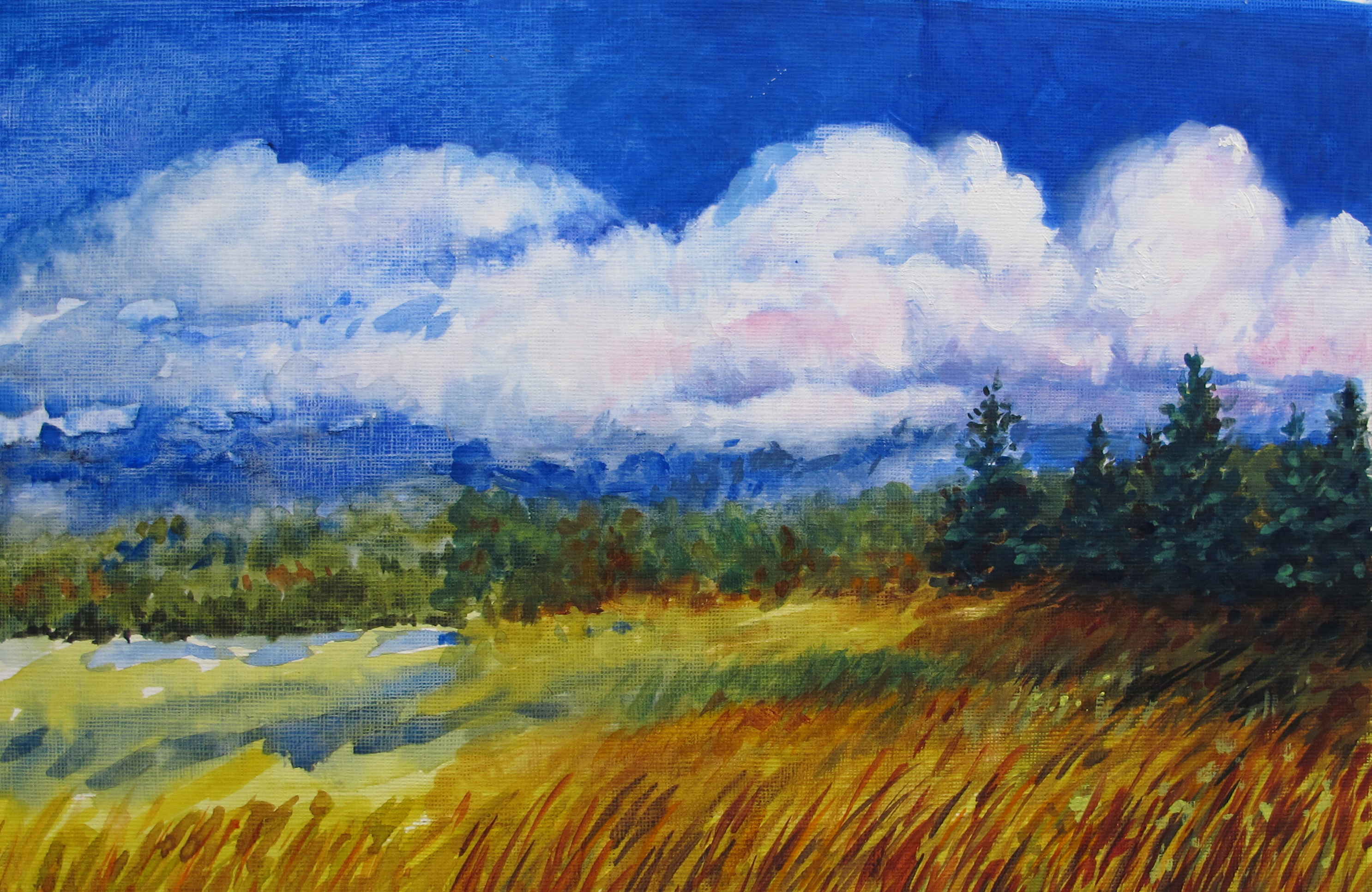Underpainting Watercolor
Are you tired of creating bland watercolor paintings? Do you want to take your artwork to the next level? One technique that can help is underpainting with watercolor. By starting with a layer of color beneath your final painting, you can create depth, vibrancy, and texture. In this article, we will explore the world of underpainting watercolor and how it can improve your artwork.
The Pain Points of Watercolor Painting
Watercolor painting can be tricky. It's easy to oversaturate your paper, leading to mushy colors and bleeding. It can also be difficult to master the right techniques for achieving the effects you want. Additionally, it can be frustrating to not get the exact colors you envision. Underpainting with watercolor can help address these pain points by providing a base layer that sets the stage for your final painting to shine.
What is Underpainting with Watercolor?
Underpainting is a technique in which you create a monochromatic layer of paint as a base for your final painting. There are a few different approaches you can use for underpainting with watercolor. The most common method is to create a wash of a single color, often a neutral hue like burnt sienna or raw umber, and let it dry completely. Then you can layer additional colors on top to create depth and complexity.
The Benefits of Underpainting Watercolor
Underpainting watercolor can help you achieve a few different effects in your final painting. By laying down a base layer, you can:
- Establish your composition
- Create a sense of depth and texture
- Allow for better control of your final colors
The Target of Underpainting Watercolor
When I first started painting with watercolor, I struggled to create the vibrancy and complexity I wanted. My colors always seemed to come out looking washed out or muddy. However, when I started experimenting with underpainting, I found that I could achieve the effects I was looking for. By using a neutral base layer, I was able to create a sense of depth and vibrancy that I had been missing before.

How to Underpaint with Watercolor
If you want to try underpainting with watercolor, here are some simple steps to follow:
- Choose a neutral hue, like burnt sienna or raw umber
- Create a wash with your chosen color and apply it to your paper
- Let the wash dry completely
- Add layers of additional colors on top, building up your painting

The Different Approaches to Underpainting with Watercolor
While the most common approach to underpainting watercolor is a monochromatic wash, there are other methods you can try as well. Some artists choose to use complementary colors as a base, while others use a separate sheet of paper to create a colored wash and then glue it onto their final paper. Experimenting with different approaches can help you find the one that works best for you.

Question and Answer: Underpainting with Watercolor
Q: Do I need to underpaint with watercolor for every painting?
A: No, underpainting is a technique that you can choose to use or not use depending on your preference and the needs of your painting. However, many artists find that it helps improve their final results.
Q: Can I use any color for my underpainting?
A: While you can technically use any color for your underpainting, neutral hues like burnt sienna or raw umber are the most commonly recommended. This is because they provide a good base for layering additional colors on top.
Q: Will underpainting with watercolor make my paper too saturated?
A: It can if you're not careful. Make sure to use a light touch and let the paint dry completely between layers to avoid oversaturation.
Q: Can you underpaint with watercolor on any type of paper?
A: While you can technically use any type of paper for underpainting with watercolor, some types of paper may absorb the paint differently than others. Cold-pressed watercolor paper is a common choice for underpainting.
Conclusion of Underpainting with Watercolor
Underpainting with watercolor is a technique that can help take your artwork to the next level. By creating a base layer of paint, you can achieve depth, vibrancy, and texture in your final painting. Experiment with different approaches to find the one that works best for you, and always make sure to let your layers dry completely to avoid oversaturation.

Gallery
Painting My World: Adding Pastel To A Watercolor Underpainting..demo

Photo Credit by: bing.com / pastel underpainting watercolor adding painting demo margulis karen 6x8 wetlands
Painting My World: Watercolor Underpainting....Choosing Colors

Photo Credit by: bing.com / underpainting pastel watercolor colors painting choosing margulis karen 8x8 morning
Painting My World: Revisiting The Watercolor Underpainting...a New Approach

Photo Credit by: bing.com / underpainting margulis karen watercolor pastel painting approach revisiting artist 5x7 meditation morning february
Acrylic Or Watercolor Underpainting For Oils | Just Paint

Photo Credit by: bing.com / watercolor underpainting acrylic paint oils oil landscape paper just
Painting My World: Tips For A Watercolor Underpainting

Photo Credit by: bing.com / watercolor underpainting tips pastel margulis 8x10 karen journey end
